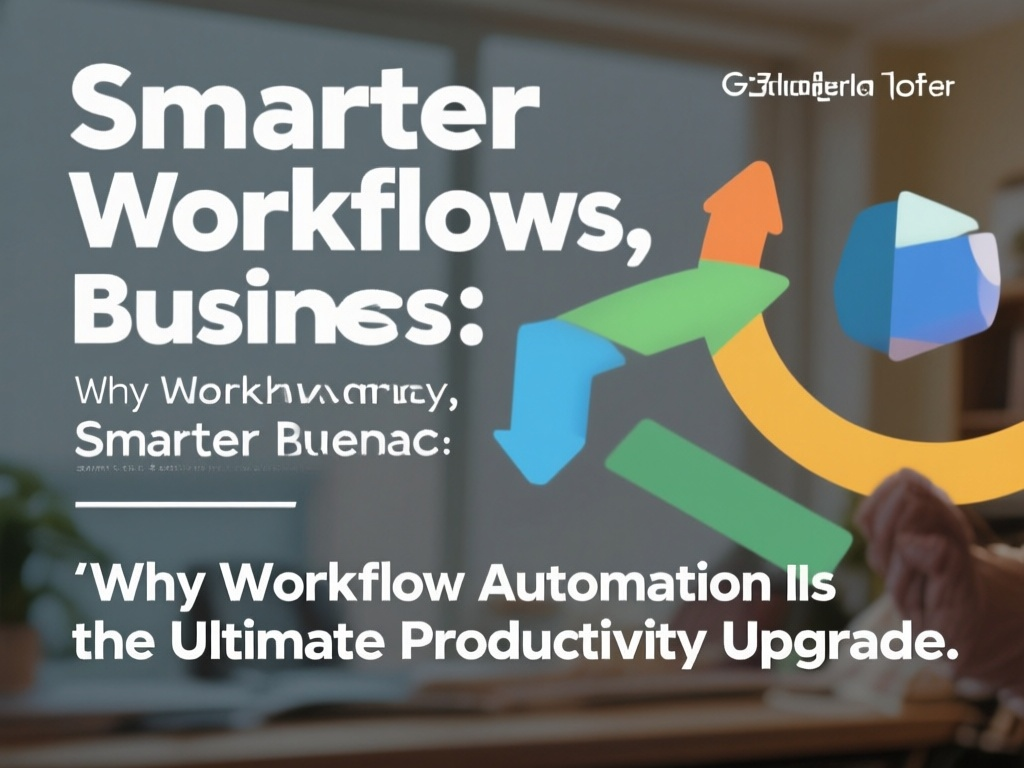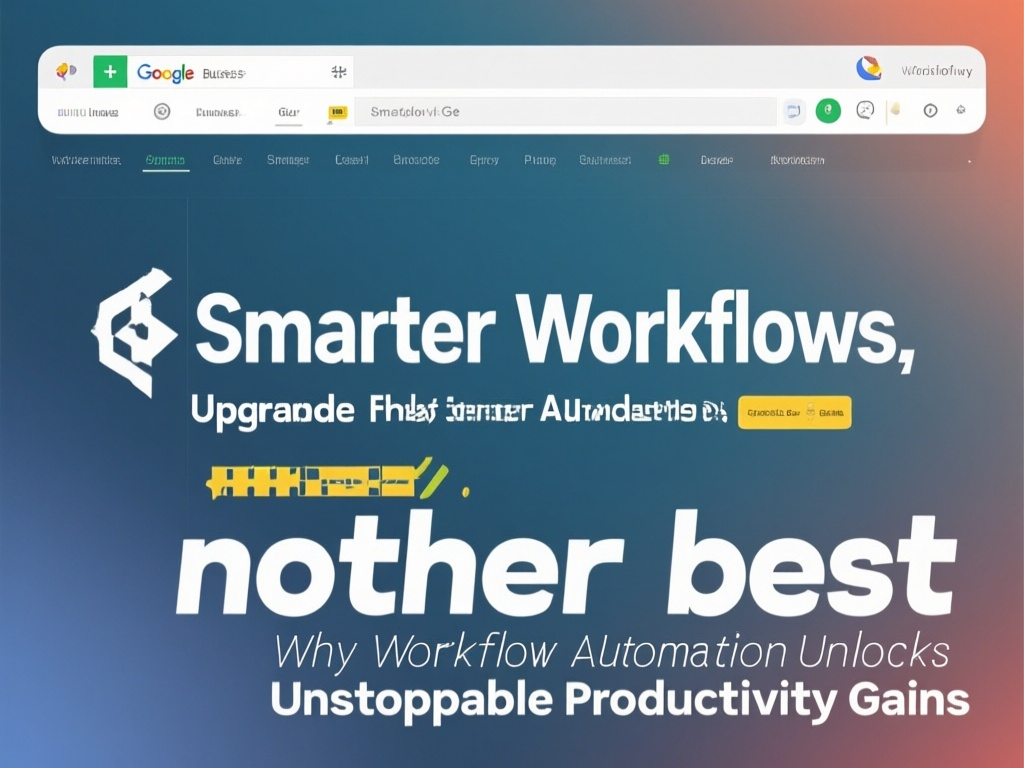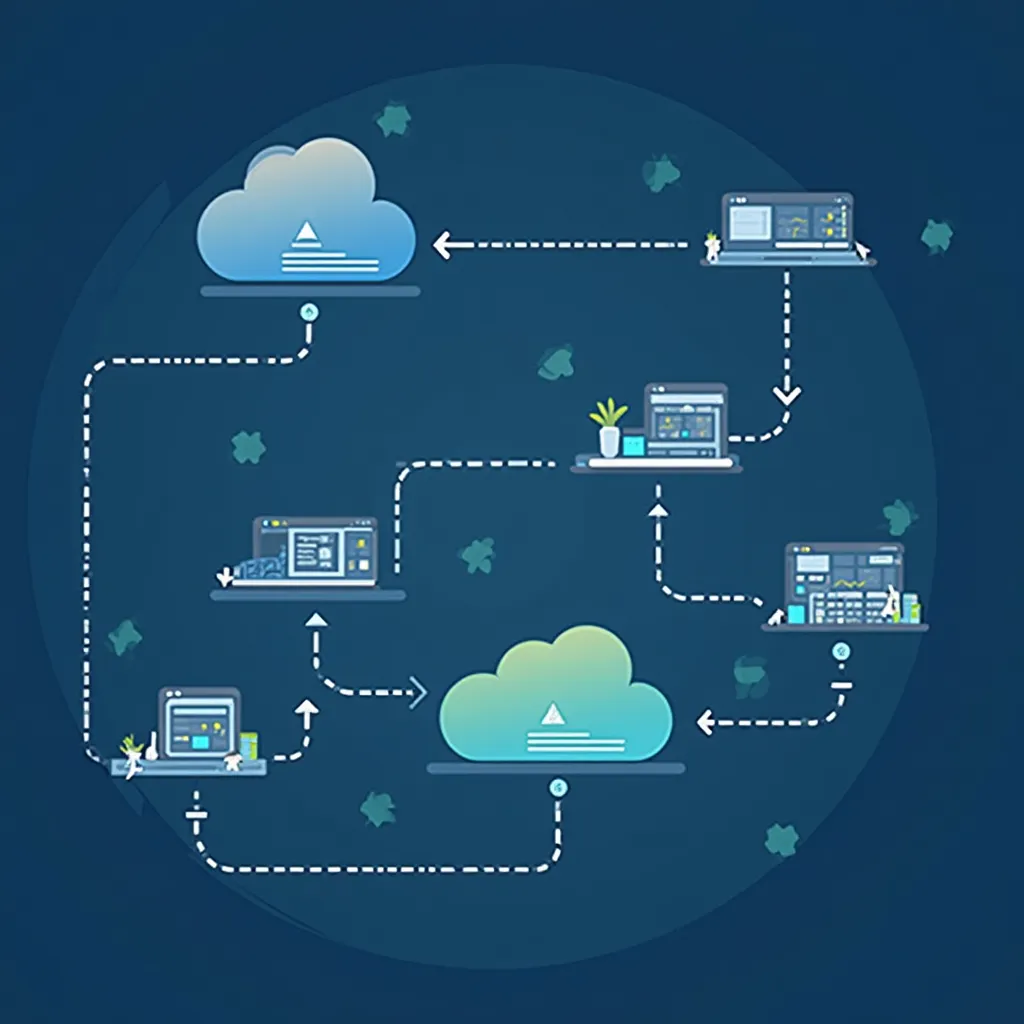
09
Smarter Workflows, Smarter Business: Why Workflow Automation Is the Ultimate Productivity Upgrade
Discover how workflow automation is transforming productivity in 2025. Learn strategies, success stories, and AI-powered tools that make smarter workflows the ultimate business growth engine.
Introduction
Productivity is the ultimate business currency. Whether you’re a startup founder racing against time, a manager juggling multiple teams, or a CEO steering an enterprise toward the future, the ability to achieve more with less has always been the golden ticket. But here’s the reality: traditional ways of working are simply no longer enough. Endless meetings, repetitive tasks, manual data entry, and siloed tools drain time, energy, and focus. The result? Bottlenecks, burnout, and missed opportunities.

Workflow automation is more than just a buzzword. It’s the strategic integration of AI-powered tools, machine learning, and intelligent systems into everyday business processes. It connects departments, eliminates human error, and builds efficiency at scale. But what makes it so powerful is not just the technology—it’s the transformation it creates. Smarter workflows mean smarter businesses, and smarter businesses win.
In this article, we’ll dive into the exciting world of workflow automation and explore:
- Why it’s the secret engine behind smarter workflows
- How it unlocks unstoppable productivity gains
- Real-world case studies proving its value
- The best strategies to maximize efficiency in 2025
- And the transformative power it has for business growth
By the time you finish reading, you’ll not only understand why workflow automation is the ultimate productivity upgrade—you’ll be inspired to make it the heartbeat of your organization.
Workflow Automation: The Secret Engine Behind Smarter Workflows
Think of your business as a machine. Every department—HR, marketing, sales, IT, operations—is a cog. But if those cogs aren’t aligned, the machine slows down, wastes energy, and risks breakdowns. Workflow automation is the oil that keeps everything moving smoothly. It’s the secret engine behind smarter workflows.
At its simplest, workflow automation means letting software handle repetitive, predictable tasks. Instead of manually sending reminder emails, updating spreadsheets, or routing documents for approval, automation systems handle it instantly and accurately. But this isn’t just about “doing the same things faster”—it’s about rethinking how work flows altogether.
Picture employee onboarding: traditionally, HR manually inputs new hire information, IT sets up accounts, payroll adds them to the system, and a manager arranges training. With workflow automation, this becomes one seamless flow: enter the new hire’s data once, and the system triggers account creation, welcome emails, training schedules, and payroll updates—all in minutes.
What powers this magic? AI. Unlike basic rule-based automations of the past, today’s AI-driven workflow automation systems adapt and learn. They can analyze patterns, predict bottlenecks, and reroute work dynamically. For example, if customer service tickets spike, automation can escalate high-priority issues to senior reps while sending instant acknowledgments to customers.
The benefits are huge:
- Error reduction: No more lost emails, forgotten tasks, or duplicate data entries.
- Visibility: Dashboards give real-time updates on process status, accountability, and performance.
- Consistency: Every step happens the same way every time, ensuring reliability.
Most importantly, automation doesn’t replace people—it empowers them. When tedious work is automated, employees get back valuable time for creativity, strategy, and problem-solving. The human brain is freed from the mundane to focus on the meaningful. That’s why workflow automation isn’t just a tool—it’s the engine driving smarter workflows in modern businesses.
Why Workflow Automation Unlocks Unstoppable Productivity Gains
Here’s the truth: productivity plateaus when humans are stuck doing what machines can do faster, cheaper, and more accurately. That’s why workflow automation unlocks unstoppable productivity gains—because it doesn’t just improve output, it transforms how work happens.
Let’s break it down:

Knowledge workers spend nearly 60% of their time on repetitive, low-value tasks like scheduling, reporting, or data entry. Workflow automation cuts that time dramatically. By letting systems handle scheduling, approvals, or lead routing, employees reclaim hours each week. Multiply those reclaimed hours across an entire organization, and the productivity gains are staggering.
2. Speed of Execution
Take contract approvals: traditionally, a contract could take weeks as it bounced between managers, legal, and clients. With automation, contracts are routed instantly, notifications are triggered in real time, and e-signatures are collected in minutes. Deals close faster, projects launch sooner, and opportunities are seized instead of delayed.
3. Employee Satisfaction
No one loves mundane work. Automating repetitive tasks boosts morale and reduces burnout. Happier employees are more engaged, creative, and loyal—directly fueling long-term productivity.
4. Scalability Without Limits
Here’s where automation shines: it scales effortlessly. Whether you’re processing 100 invoices or 100,000, automation doesn’t slow down. Businesses can grow without proportional increases in headcount, keeping costs lean while output expands.
5. AI-Powered Intelligence
AI-driven workflow automation goes beyond efficiency. It enables predictive insights—like identifying the hottest sales leads, flagging compliance risks, or forecasting workload peaks. Instead of reacting, businesses can act proactively, keeping productivity at peak performance.
The result? Productivity isn’t just improved—it’s supercharged. Workflow automation ensures work happens faster, smoother, and smarter, giving businesses an unstoppable edge.
Real-World Success Stories of Workflow Automation in Action
Theory is great, but proof is better. Across industries, workflow automation is reshaping the way work gets done. Here are some real-world success stories:
- Healthcare: Hospitals have automated patient intake, scheduling, and billing. Instead of staff juggling forms and calls, patients complete digital check-ins that trigger workflows: appointment scheduling, insurance verification, and follow-ups. This has cut wait times, reduced errors, and freed doctors to focus on care.
- Finance: A multinational bank automated compliance checks. AI now scans transactions in real time, flagging only suspicious activity for review. What once took teams days now takes minutes, cutting costs and reducing regulatory risk.
- Retail & E-commerce: Global retailers automate inventory management, restocking, and personalized marketing campaigns. When stock runs low, the system triggers reorders. Meanwhile, AI-driven email workflows send personalized offers based on customer behavior—boosting engagement and sales.
- Marketing Agencies: Small agencies use automation to streamline lead capture, scoring, and nurturing. Leads from websites automatically enter CRMs, get scored by engagement level, and are routed to sales teams. Agencies save hours of manual sorting while improving conversion rates.
These stories prove that automation isn’t just for tech giants—it’s for everyone. The beauty of workflow automation is its adaptability: whether you’re a small business or a global enterprise, the principles apply, and the results are transformative.
Workflow Automation Strategies That Maximize Efficiency in 2025
Adopting automation isn’t enough. To fully harness its power, businesses need smart strategies. Here’s how to make workflow automation your efficiency supercharger in 2025:

- Map Before You Automate
Don’t automate broken processes. Start by analyzing current workflows, spotting bottlenecks, and defining goals. Automate only what makes sense. - Integrate Seamlessly
The true power of automation lies in integration. In 2025, platforms like Zapier, Make, and native integrations let businesses connect CRMs, project tools, communication apps, and finance systems. Integration ensures data flows smoothly across departments. - Personalize for Teams
Different teams need different automations. Marketing might need campaign triggers, while HR automates onboarding. Tailor workflows to each department’s goals for maximum ROI. - Embrace AI-Driven Automation
Static, rule-based workflows are yesterday’s news. AI-powered automations in 2025 adapt dynamically—predicting workload spikes, rerouting tasks, and optimizing flows in real time. - Measure & Iterate
Treat automation as a journey, not a destination. Monitor performance with dashboards, gather feedback, and refine workflows continuously. Small tweaks can add up to massive efficiency gains.
By combining thoughtful planning, integration, personalization, and AI-powered intelligence, businesses can transform workflow automation into a true productivity powerhouse.
The Transformative Power of Workflow Automation for Business Growth
At its core, workflow automation isn’t just about efficiency—it’s about transformation. It’s the lever that fuels sustainable business growth.
- Scalability: Automation allows companies to scale operations without exponentially increasing costs. Growth is no longer limited by headcount.
- Innovation: By freeing employees from repetitive tasks, automation creates space for creative problem-solving and innovation. Teams focus on big ideas, not busywork.
- Data-Driven Insights: Automated systems capture and analyze massive amounts of data. This reveals patterns, inefficiencies, and opportunities, enabling smarter decisions.
- Customer Experience: Automation ensures consistent, personalized interactions—whether it’s a follow-up email, a proactive support message, or a smooth checkout. Better experiences drive loyalty and revenue.
- Future-Proofing: In a fast-changing world, agility is survival. Automated workflows help businesses pivot quickly to new markets, products, or customer demands.
Workflow automation transforms businesses from reactive to proactive, from slow to agile, from average to exceptional. It’s not just a productivity tool—it’s a growth engine.
Conclusion
The world of work is changing fast, and the winners will be those who adapt. Workflow automation is no longer optional—it’s essential. From its role as the secret engine behind smarter workflows to its power to unlock unstoppable productivity, real-world success stories, strategies for efficiency, and transformative impact on growth, the evidence is overwhelming.
The future belongs to smarter businesses, and smarter businesses are built on smarter workflows. Workflow automation doesn’t just make work easier—it makes work better. It empowers people, fuels innovation, delights customers, and drives growth.
So, if you’re serious about success in 2025 and beyond, there’s only one choice: embrace workflow automation. Because when workflows get smarter, businesses do too.
Contact
Missing something?
Feel free to request missing tools or give some feedback using our contact form.
Contact Us